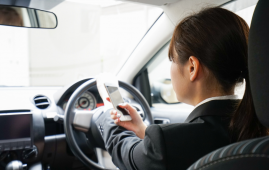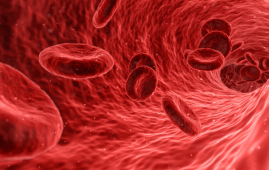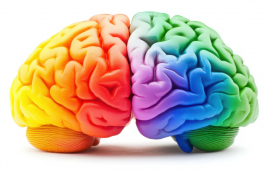

In a groundbreaking collaboration, Professors Jang Hyun Choi and Sung Ho Park from UNIST’s Department of Biological Sciences have unveiled a critical element in the genesis of obesity-induced non-alcoholic fatty liver disease (NAFLD).
Their study highlights Thrap3, a protein linked to thyroid hormone receptors, as a key contributor to the worsening of NAFLD. Thrap3’s role is to suppress adenosine monophosphate-activated protein kinase (AMPK), a pivotal regulator of liver fat metabolism. These findings were published in the journal Experimental & Molecular Medicine.
NAFLD comprises a range of metabolic disorders, including fatty hepatitis and cirrhosis, arising from excessive fat buildup. Despite its widespread occurrence, viable NAFLD treatments have remained limited. However, this pioneering investigation unveils potential therapeutic avenues.
Utilizing rat-based experiments, the research group illustrated Thrap3’s direct binding to liver-based AMPK. This binding hinders AMPK’s migration from the nucleus to the cytoplasm, compromising the critical process of autophagy responsible for triglyceride breakdown and cholesterol reduction. Consequently, targeting Thrap3 expression emerges as a promising strategy for treating NAFLD effectively.
We have encountered significant challenges while developing treatment strategies for non-alcoholic fatty liver disease. However, our discovery of the Thrap3 gene provides us with an effective method to tackle this condition,” commented Professor Choi.
Furthermore, it was verified that the effective inhibition of Thrap3 expression leads to notable improvements in non-alcoholic steatohepatitis (NASH), an inflammatory condition linked to fatty liver.
An abstract from the Nature Journal reports – Autophagy is vital for cellular health and metabolism. Dysregulated autophagy contributes significantly to nonalcoholic fatty liver disease (NAFLD) progression. It aids lipid breakdown and maintains healthy mitochondria. However, the mechanisms behind autophagy disruption in NAFLD were unclear. Our study reveals increased Thrap3 expression in NAFLD, and liver-specific Thrap3 deletion improved lipid metabolism and autophagy in an NAFLD model. Thrap3 deficiency facilitated AMPK translocation and activation via direct interaction. This highlights Thrap3’s role in NAFLD and its potential as a treatment target.
more recommended stories
 Silica Nanomatrix Boosts Dendritic Cell Cancer Therapy
Silica Nanomatrix Boosts Dendritic Cell Cancer TherapyKey Points Summary Researchers developed a.
 Vagus Nerve and Cardiac Aging: New Heart Study
Vagus Nerve and Cardiac Aging: New Heart StudyKey Takeaways for Healthcare Professionals Preserving.
 Cognitive Distraction From Conversation While Driving
Cognitive Distraction From Conversation While DrivingKey Takeaways (Quick Summary) Talking, not.
 Fat-Regulating Enzyme Offers New Target for Obesity
Fat-Regulating Enzyme Offers New Target for ObesityKey Highlights (Quick Summary) Researchers identified.
 Spatial Computing Explains How Brain Organizes Cognition
Spatial Computing Explains How Brain Organizes CognitionKey Takeaways (Quick Summary) MIT researchers.
 Gestational Diabetes Risk Identified by Blood Metabolites
Gestational Diabetes Risk Identified by Blood MetabolitesKey Takeaways (Quick Summary for Clinicians).
 Phage Therapy Study Reveals RNA-Based Infection Control
Phage Therapy Study Reveals RNA-Based Infection ControlKey Takeaways (Quick Summary) Researchers uncovered.
 Pelvic Floor Disorders: Treatable Yet Often Ignored
Pelvic Floor Disorders: Treatable Yet Often IgnoredKey Takeaways (Quick Summary) Pelvic floor.
 Urine-Based microRNA Aging Clock Predicts Biological Age
Urine-Based microRNA Aging Clock Predicts Biological AgeKey Takeaways (Quick Summary) Researchers developed.
 Circadian Control of Neutrophils in Myocardial Infarction
Circadian Control of Neutrophils in Myocardial InfarctionKey Takeaways for HCPs Neutrophil activity.

Leave a Comment